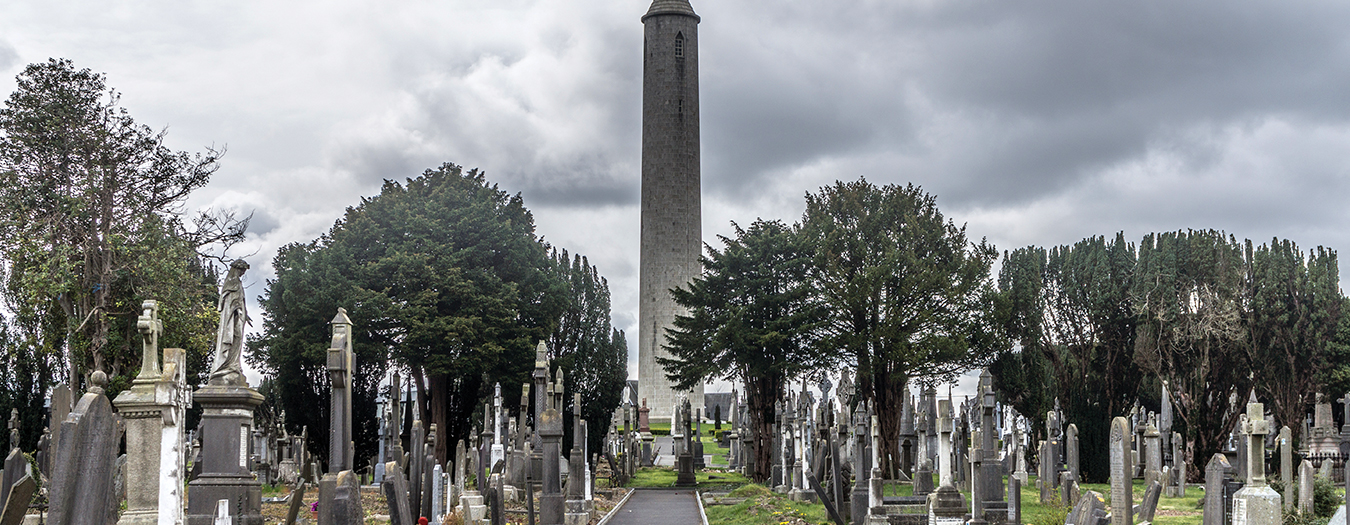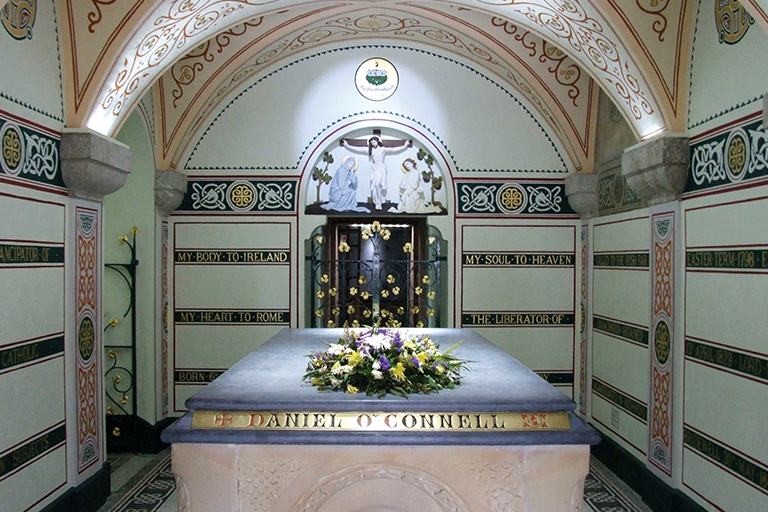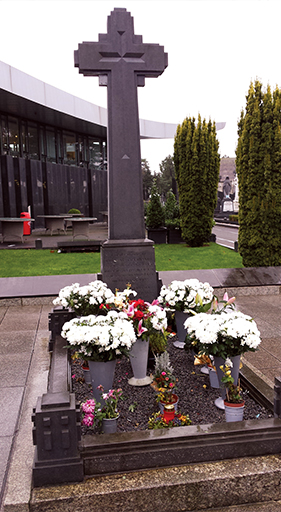By Msgr. Francis A. Carbine
A cemetery with gift shop, museum, resident historian, café, genealogy office, and bus tours: does such exist? Indeed, it does…in Dublin’s Glasnevin Cemetery where 1.5 million bodies are buried!
Here, troops of children shudder at ghastly tales of grave-robbers. Genealogists explore carefully maintained records. “Veronique” — mysterious French woman — visits the grave of Michael Collins. The shop sells heart-shaped balloons for Valentine’s Day.
Within the 150 acres are monuments to Republicans of the Rising, Hunger Strikers, and Irish Soldiers in India who mutinied in 1916, and victims of 1849 epidemic buried in a circular, mass grave. Stone angels mark the plot where stillborn and young children are interred.
For a century and more, Catholic cemeteries had not been permitted. In 1832, Daniel O’Connell saw to the founding of Glasnevin as a place for “dignified burial” for Protestants and Catholics alike. Sikhs and Jews are also interred here as are people of no faith.
Today, Mass is celebrated every Sunday morning. A Blessing of Graves takes place annually. Ringed Crosses, statues of the Sacred Heart and Virgin Mary stand everywhere. There are sections called St. Bridget and St. Patrick.
Some grave markers are inscribed, “Kneel and pray.” Others read “Stay Awhile” and “Sit and Chat.” The 200,000 annual visitors have options!
The first burial was that of an 11-year-old boy, Michael Carey from Dublin. He died from tuberculosis on February 22, 1832. The cemetery had been consecrated and opened the previous day.
Presiding over this national necropolis is the monument to Daniel O’Connell (1775- 1847]). The crypt of “Ireland’s Emancipator” bears the text: “My Heart to Rome. My body to Ireland. My soul to Heaven.” The granite round tower above crypt rises 150 feet and is topped with a cross.
In 1915, Padraig Pearse gave his celebrated eulogy over the grave of his fellow patriot, O’ Donovan Rosa. Pearse stated “The fools, the fools, they have left us our Fenian Dead. Ireland unfree shall never be at peace.”
In 1916, Pearse was executed in Dublin’s Kilmainham Jail. His speech, however, is recited annually during the service before the Republican Military Monument.
A boulder of Wicklow granite marks burial site of Charles Stewart Parnell, champion of Home Rule. Additional Republican heroes buried here include Kevin Barry, Maud Gonne, Constance Markiewicz, James Larkin, Roger Casement, Grace Gifford, and Harry Boland who was a colleague of Michael Collins.
The grave site of Michael Collins is marked by a tall Irish Cross. The woman he was preparing to marry also lies in Glasnevin. Her stone reads: “Kitty Kieran Cronin.” A Guide tells tourists that “Kitty didn’t wallow in grief.”
The DVD titled “One Million Dubliners” guides viewers through the history and “who’s who” of the cemetery. The tone of the DVD is detached. A Guide says: “It lifts my spirit to work here.”
A secular perspective prevails. A crematory technician gives an explanation of his duties. An administrator says: “I would like to think there is something after death … but I don’t know.”
However, in 1832, the planners of Glasnevin arranged grave sites so that all bodies interred here would face the rising sun.
The DVD shows the cemetery on rainy and sunny days, and during different seasons. Viewers see daffodils and bare branches. Birds perch upon tombstones. High crosses are silhouetted against a twilight sky.
Aerial views show landscaped acres. A close-up shows a glass of Guinness on grave of the writer, Brendan Behan. The museum displays weapons, photos and the New Testament belonging to Roger Casement.
The DVD includes Luke Kelly of Dubliners fame, singing: “I must away now … into the arms I love the most.” Luke died in 1984 and is buried here. His epitaph: “Luke Kelly – Dubliner.”
Joseph Mary Plunkett, poet and patriot who, at age 28 was executed by firing squad in 1916, completes the presentation: “I see his blood upon the rose … I see his face in every flower … I see his cross in every tree.”
Glasnevin is a personal, historic and prayerful place.



